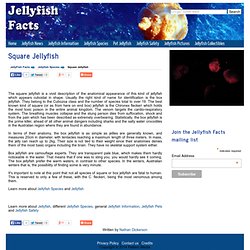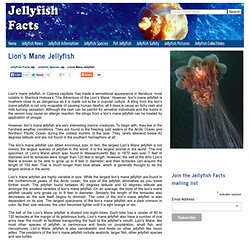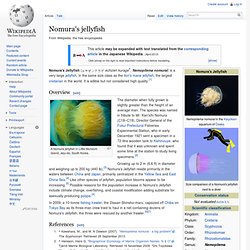

Underwater World / Photos: New Species, "Living Fossils" Found in Atlantic. Physalia Jellyfish. The Physalia jellyfish, scientifically regarded to as Physalia physalis is the term used to refer to the Portuguese Man 'O War.

It is among the most feared of jellyfish probably because of its stinging and tropical abundance. It is mostly located in the salt water bodies in the tropics. The Atlantic and Pacific oceans are the dense water bodies that have an abundance of this species of jellyfish. Square Jellyfish. The square jellyfish is a vivid description of the anatomical appearance of this kind of jellyfish which appears cuboidal in shape.

Usually the right kind of name for identification is the box jellyfish. They belong to the Cubozoa class and the number of species total to over 19. The best known kind of square (or as from here on end box) jellyfish is the Chironex fleckeri which holds the most toxic poison in the entire animal kingdom. The venom targets the cardio-respiratory system. The breathing muscles collapse and the stung person dies from suffocation, shock and from the pain which has been described as extremely overbearing. In terms of their anatomy, the box jellyfish is as simple as jellies are generally known, and measures 20cm in diameter, with tentacles reaching a maximum length of three meters. Box jellyfish are camouflage experts. It's important to note at this point that not all species of square or box jellyfish are fatal to human. Lion's Mane Jellyfish. Lion's mane jellyfish, or Cyanea capillata, has made a sensational appearance in literature, most notably in Sherlock Holmes's 'The Adventure of the Lion's Mane.' However, lion's mane jellyfish is nowhere close to as dangerous as it is made out to be in popular culture.

A sting from the lion's mane jellyfish is not only incapable of causing human deaths; all it does is cause an itchy rash and mild burning sensation. Irukandji Jellyfish, Iracongi Jellyfish. Irukandji Jellyfish, sometimes referred to as Iracongi Jellyfish are extremely toxic and very tiny and found usually around Australia.

There are two species which are currently known, these species are the Carukia barnesi and the Malo kingi which has been discovered only recently. These jellyfish are responsible for Irukandji Syndrome which is caused by a group of symptoms intertwined. this syndrome was first researched and recorded by Hugo Flecker in the year of 1952 and the Jellyfish was named after the Irukandji people whose land is along the coastal strip north of Cairns in Queensland, Australia. in 1964 Dr. Jack Barnes made the very first identification of the Carukia barnesi and stung himself as well as his own son and a lifeguard to prove that this tiny jellyfish was the cause of irukanji Syndrome, he was successful.
Nomura's jellyfish. Nomura's Jellyfish (エチゼンクラゲ, echizen kurage?

, Nemopilema nomurai) is a very large jellyfish, in the same size class as the lion's mane jellyfish, the largest cnidarian in the world. It is edible but not considered high quality.[1] Stygiomedusa gigantea. With only 17 sightings in the last 110 years it is a jellyfish that is rarely seen, but believed to be widespread throughout the world.

It is thought to be one of the largest invertebrate predators in the deep sea ecosystem. The jellyfish has an umbrella-shaped bell that can be up to a metre wide, and has four arms that extend up to six metres in length. These "paddle-like" arms lack stinging tentacles, and scientists are unsure of their exact function. It has been suggested that they might be used to envelop and trap prey. On May 19, 2009 scientists filmed a giant Stygiomedusa in its natural deep sea habitat for the first time. References[edit] External links[edit] Lion's mane jellyfish. The lion's mane jellyfish (Cyanea capillata), also known as hair jelly,[1] is the largest known species of jellyfish.

Its range is confined to cold, boreal waters of the Arctic, northern Atlantic, and northern Pacific Oceans, seldom found farther south than 42°N latitude. Similar jellyfish, which may be the same species, are known to inhabit seas near Australia and New Zealand. The largest recorded specimen found, washed up on the shore of Massachusetts Bay in 1870, had a bell (body) with a diameter of 7 feet 6 inches (2.29 m) and tentacles 120 feet (37 m) long.[2] Lion's mane jellyfish have been observed below 42°N latitude for some time—specifically in the larger bays of the east coast of the United States.
While the lion's mane jellyfish generally use their stinging tentacles to capture prey, sea anemones can capture their tentacles, which then become tangled, torn apart and consumed.[3] Taxonomy[edit] Cyanea sp. Description[edit] The bell is divided into eight lobes. Ecology[edit]